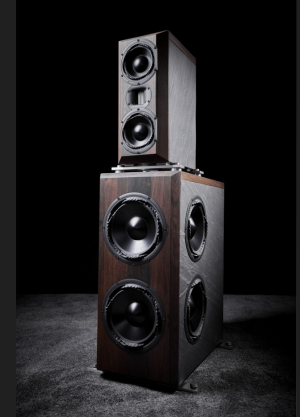amrutmhatre90
Well-Known Member
I recently had the chance to experience one of the best audio setups I’ve heard to date at Harsh Merchant's place. Many of you may know him as the Country Head of Lenbrook, the parent company for IsoAcoustics, NAD, Bluesound, and PSB. But beyond his professional role, he’s a true audiophile and an incredibly kind person.
Due to scheduling conflicts, I hadn't visited earlier, but when I finally did, it was well worth the wait! We listened to an incredible range of music and had some insightful conversations. Harsh showcased three different setups, and there were several moments when I couldn’t help but smile or even have my jaw drop—whether due to how well a smaller speaker scaled, the choice of cables, or the magic of Dirac room correction.
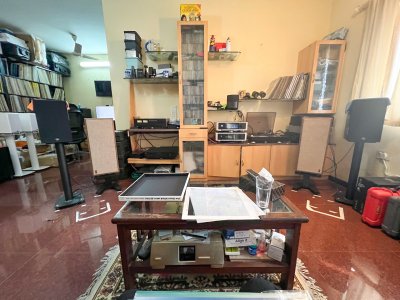
I’m not going to dive into speaker or amplifier comparisons, as I’ve heard plenty of great systems before. But the true star of the day was Dirac! It made me forget about the amp, DAC, and even the speakers themselves. The way Harsh has calibrated his system with Dirac is something everyone should experience. It was a revelation in how well Dirac can perform in a 2-channel system.
We listened to both digital and analog sources, with and without Dirac, and the results were extraordinary. The scale, separation, and depth were unlike anything I’ve heard before—no frequency felt out of place. There were no peaks or dips, and each frequency was presented with pinpoint accuracy. Whether listening at low levels or cranking the volume, no frequency ever overpowered another. And hearing this on analog was the icing on the cake!
His listening room may not be perfectly treated—speakers are near a corner, close to a window, and one side is open—but once you hear it, everything you've listened to before will pale in comparison.
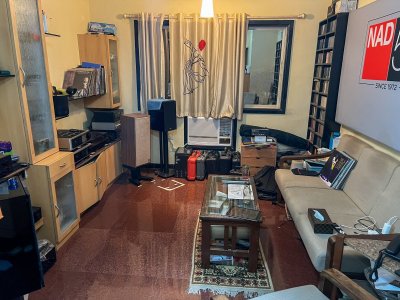
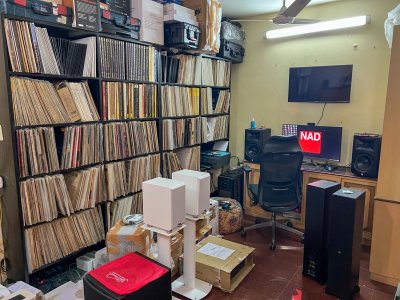
I highly recommend anyone in Mumbai to reach out to Harsh for a demo. His setup is a true eye-opener.
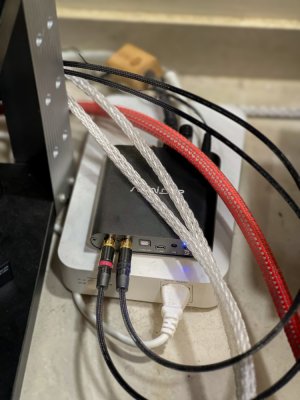
The upgrade process was simple, but I ran into some issues when connecting it to my MacBook—USB detection failed, and Dirac couldn’t connect to the internet. Switching to a Windows PC solved the problem, and I found Dirac’s measurement process much easier than with REW. The best part was that Dirac automatically creates filters, which I could tweak and save into four presets accessible via the remote. You can also turn Dirac on and off with the remote, making it easy to compare the sound with and without the filters.
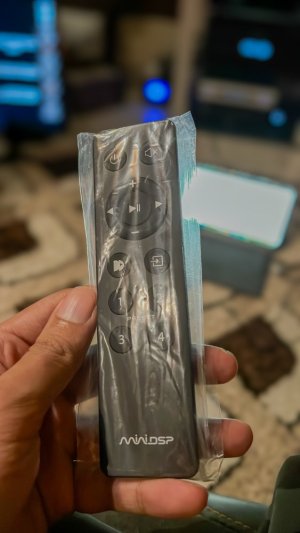
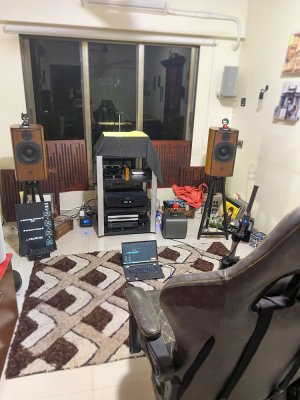
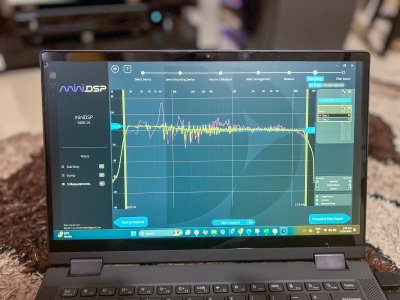
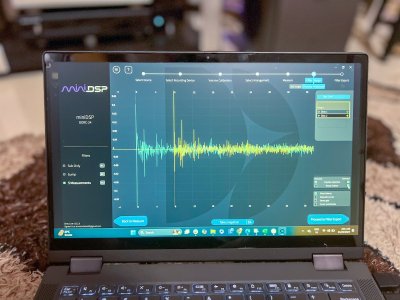
I’ve placed the MiniDSP between my DAC or phono stage and amp to use Dirac with my analog setup as well.
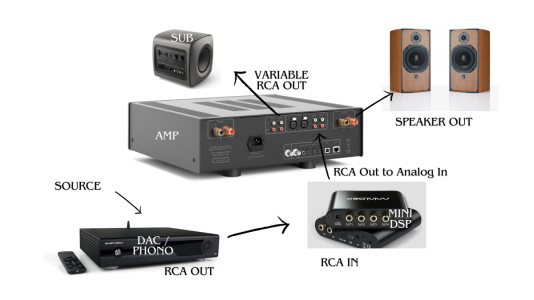
The real magic happens with the soundstage. Dirac enhances stereo imaging, creating a wider, deeper, and more precise sense of space. Instrument placement is incredibly accurate, and vocals sound more focused and lifelike.
Dirac also optimizes phase alignment, ensuring that all frequencies reach your ears in perfect timing, resulting in a more coherent and seamless sound. Whether at low or high volumes, the sound remains balanced and natural, with no dips or distortion. Clarity and detail are enhanced, revealing micro-details you may have missed before.
It’s like hearing your music for the first time, but in a more natural and accurate way. The result is a system that performs exceptionally across the frequency range, with a sense of balance and depth that’s hard to beat. After using Dirac, the bass was much tighter and more controlled. Once the bass was cleaned up, everything else seemed to fall into place, resulting in a clear and balanced sound. In some tracks, it felt like a veil had been lifted—the soundstage became clearer, wider, and better layered. I was genuinely amazed by the improvement and would highly recommend others to give it a try.
Let me know if anyone has additional tips or experiences with Dirac and MiniDSP—I’d love to hear your thoughts!
Due to scheduling conflicts, I hadn't visited earlier, but when I finally did, it was well worth the wait! We listened to an incredible range of music and had some insightful conversations. Harsh showcased three different setups, and there were several moments when I couldn’t help but smile or even have my jaw drop—whether due to how well a smaller speaker scaled, the choice of cables, or the magic of Dirac room correction.

I’m not going to dive into speaker or amplifier comparisons, as I’ve heard plenty of great systems before. But the true star of the day was Dirac! It made me forget about the amp, DAC, and even the speakers themselves. The way Harsh has calibrated his system with Dirac is something everyone should experience. It was a revelation in how well Dirac can perform in a 2-channel system.
We listened to both digital and analog sources, with and without Dirac, and the results were extraordinary. The scale, separation, and depth were unlike anything I’ve heard before—no frequency felt out of place. There were no peaks or dips, and each frequency was presented with pinpoint accuracy. Whether listening at low levels or cranking the volume, no frequency ever overpowered another. And hearing this on analog was the icing on the cake!
His listening room may not be perfectly treated—speakers are near a corner, close to a window, and one side is open—but once you hear it, everything you've listened to before will pale in comparison.


The Equipment:
- Amp: NAD M33
- Speakers: PSB Synchrony
- Turntable: Pioneer 500 with a Bronze cartridge
- Sources: FLACs, Tidal, or Qobuz
I highly recommend anyone in Mumbai to reach out to Harsh for a demo. His setup is a true eye-opener.
My Personal Experience with Dirac:
After hearing multiple setups with Dirac Live at Harsh’s, I was eager to try it out myself. Since I had already invested in a Hegel H390, the NAD M33 was out of my budget. However, I discovered that the MiniDSP 2x4HD could be upgraded to Dirac Live for just $200.
The upgrade process was simple, but I ran into some issues when connecting it to my MacBook—USB detection failed, and Dirac couldn’t connect to the internet. Switching to a Windows PC solved the problem, and I found Dirac’s measurement process much easier than with REW. The best part was that Dirac automatically creates filters, which I could tweak and save into four presets accessible via the remote. You can also turn Dirac on and off with the remote, making it easy to compare the sound with and without the filters.




I’ve placed the MiniDSP between my DAC or phono stage and amp to use Dirac with my analog setup as well.

How Dirac Sounds in a 2-Channel System:
Dirac Live truly transforms the listening experience in a 2-channel setup. The bass becomes tighter and more controlled, eliminating any boominess. High frequencies are clearer, without harshness, and midrange frequencies feel more detailed and balanced.The real magic happens with the soundstage. Dirac enhances stereo imaging, creating a wider, deeper, and more precise sense of space. Instrument placement is incredibly accurate, and vocals sound more focused and lifelike.
Dirac also optimizes phase alignment, ensuring that all frequencies reach your ears in perfect timing, resulting in a more coherent and seamless sound. Whether at low or high volumes, the sound remains balanced and natural, with no dips or distortion. Clarity and detail are enhanced, revealing micro-details you may have missed before.
It’s like hearing your music for the first time, but in a more natural and accurate way. The result is a system that performs exceptionally across the frequency range, with a sense of balance and depth that’s hard to beat. After using Dirac, the bass was much tighter and more controlled. Once the bass was cleaned up, everything else seemed to fall into place, resulting in a clear and balanced sound. In some tracks, it felt like a veil had been lifted—the soundstage became clearer, wider, and better layered. I was genuinely amazed by the improvement and would highly recommend others to give it a try.
A Few Downsides:
The MiniDSP 2x4HD has a few limitations: it can’t be shared between PCs without resetting, it only supports one input (requiring manual switching between sources), and it lacks XLR inputs and outputs. There’s also a slight reduction in gain with Dirac, possibly due to headroom limitations.Some Tips:
- Point the mic toward the ceiling during calibration.
- Use pre-outs from your integrated amplifier for your subwoofer.
- Calibrate your speakers and subwoofer together as one unit.
- Take at least three measurements and save the default preset to modify from.
Let me know if anyone has additional tips or experiences with Dirac and MiniDSP—I’d love to hear your thoughts!



